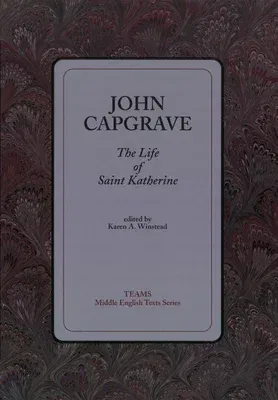John Capgrave
(Author)Life of Saint Katherine PBPaperback, 1 January 2000

Qty
1
Turbo
Ships in 2 - 3 days
In Stock
Free Delivery
Cash on Delivery
15 Days
Free Returns
Secure Checkout

Part of Series
Middle English Texts
Print Length
332 pages
Language
English
Publisher
Medieval Institute Publications
Date Published
1 Jan 2000
ISBN-10
1580440533
ISBN-13
9781580440530
Description
Product Details
Author:
Book Format:
Paperback
Country of Origin:
GB
Date Published:
1 January 2000
ISBN-10:
1580440533
ISBN-13:
9781580440530
Language:
English
Location:
Kalamazoo
Pages:
332
Publisher:
Series: